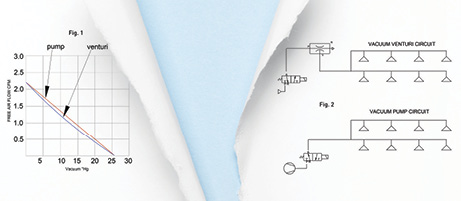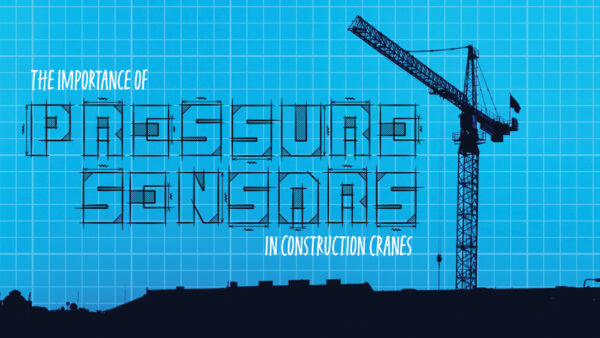Striking Gold With Compressed Air Training
Employees of New Gold’s New Afton copper/silver/gold mine, located just west of Kamloops, British Columbia, Canada, have recently completed an intensive round of Compressed Air Challenge (CAC) and in-house compressed air efficiency training. The awareness raised by these seminars has already led to significant improvements to their system efficiency and achieved some significant cost reductions for the mine. These efforts were initiated by Andrew Cooper, an energy specialist hired through special support from BC Hydro’s Power Smart program as an energy manager. Future projects are expected to gain even more power savings and make improvements to the reliability and stability of their compressed air system.
Inspired by CAC’s one-day Fundamentals of Compressed Air Systems webinar and continuing through the two-day Advance Management of Compressed Air Systems course, key employees of New Afton mine have gained a new appreciation of the high costs of compressed air.
Andrew Cooper decided since the majority of employees deal with compressed air in one way, shape, or form, it was important to create awareness around its use. He started by inviting all employees to a 30-minute compressed air awareness training session one small group at a time. To date, approximately 300 people have been through this training.
The short training course was designed to be more of an awareness session rather than training. Andrew wanted to make it informal, so he did not use any slides. The objectives were to
- create awareness around why compressed air is so expensive
- promote discussion around the uses of compressed air
- create awareness about the compressed air management initiatives New Gold is undertaking
From these employees, a narrower cross-functional group of 20 people were selected to do the CAC Fundamentals of Compressed Air webinar. This group was made up of employees from mechanical and electrical maintenance, engineering, mine operations, processing, IT, and purchasing as it was felt it was important for people across all functions of the organization to be aware of compressed air efficiency.
In addition to this, to further enhance compressed air knowledge, 13 New Gold employees attended the Advanced Management of Compressed Air course.
Cooper felt to be sustainable, energy management and efficiency should not be dependent on one person, but should be what is typically done by all employees on a day-to-day basis, as part of what good employees do at New Gold. His theory is that the more people with the awareness and knowledge about compressed air efficiency, the better it is for the company as a whole.
Fig. 1: New Gold’s Leak Tag Board raises awareness by taking a prominent position in their facility.
Cost of Compressed Air
A recent audit done on the mine’s compressed air system for the underground compressed air supply only estimated the electrical cost at about $315,000 per year. This did not include two 50-hp compressors at a batch plant, the 250-hp compressor a contractor had connected up to supply its surface jet-creting machine, or the various smaller compressors dotted around site. One could safely estimate that compressed air was costing the company approximately $400,000 per year. And there were three new 350-hp compressors soon to be commissioned in the new mill. A typical compressed air efficiency effort can gain savings in the range of 20% to 30% with very affordable project costs; in this case the potential savings were in the $80,000 to $120,000 per year range.
The audit found that the underground compressed air system had one 300-hp compressor in a bad location underground in warm, dusty air. This makes for a high-maintenance, inefficient machine. And due to the large distances between the various compressors, they do not “talk” to each other and control themselves independently. This poor control results in uncoordinated compressor operation and drives the operating costs higher.
Although there is a huge volume of pipe feeding underground, there are no storage receivers at the compressor or various critical loads to protect against large demand surges from high compressed air demand equipment. It therefore takes quite a while for the various compressors, spaced as far as 4-km apart, to react to a big demand from a piece of equipment. This is likely why the one 300-hp compressor was installed underground.
As a result of the new knowledge of compressed air systems, some excellent action has been initiated. Funded by the BC Hydro Power Smart program, a local consultant is doing a feasibility study on relocating all compressors feeding the underground air system to a centralized location and, if possible, installing receivers at strategic locations underground. Significant savings are expected.
Cooper feels the training has helped with their long-term compressed air system plans. All employees are more aware of what to look for in terms of inefficiencies and of what is required when redesigning or upgrading a compressed air system. Cross-functional training has made people more aware of lifecycle costing, the importance of maintenance, and the importance of minimizing leaks in the mine.
One example is where an electrician who had been through the basic awareness training discovered an always-open ½” blow-down valve on a contractor’s 250-hp compressor receiver. Because of the training, he approached the contractor and notified the energy manager. The drain was open because the air was too wet. Further investigation found that the solenoid valve on the oil/water separator after the compressor after-cooler was not working. This was repaired, and a no-loss drain was purchased for the receiver. Since the training, numerous people have reported fixing leaks and making system improvements. Cooper feels that little things like this prove that even basic awareness training can pay dividends. He indicated he now has hundreds of pairs of eyes looking for compressed air waste.
The compressed air training has stressed the high cost of compressed air leaks and the importance of making repair part of normal maintenance. As a result, New Gold has launched a special leak tag-and-repair program. BC Hydro supplied leak-tag boards (Fig. 1), New Gold had leak-tag cards made up, and special coding was set up for the computerized maintenance system to process and sort air leak notifications.
When asked to sum up the most important things learned about compressed air in the training, Andew Cooper listed four:
- The importance of up-front compressed air system design to save time and money down the line
- Calculations for the proper application of storage receivers to deal with short duration and high CFM applications
- The need for constant diligent monitoring and maintenance of compressed air systems
- The importance of control compressors to match plant demand rather than letting them run constantly.
“Companies like New Gold know that to prosper in a competitive worldwide market, every cost must be managed. Compressed air and its associated costs were rarely managed in the past, but now you can,” said Jeff Yarnall, New Gold’s compressed air instructor and a Level 2 instructor with Compressed Air Challenge. “Training offered by the Compressed Air Challenge helps to stimulate awareness and action. New Gold is a company that has gotten serious about compressed air and has sent several people to both CAC classes. I expect great things from them in the coming year. Remember, you can dig gold out of the ground or you can create it by managing your compressed air system wisely.”
By Ron Marshall, Compressed Air Challenge
For more information:
Learn about the high cost of your compressed air and how to optimize your system by reading the Best Practices for Compressed Air Systems manual and by signing up for one of CAC’s Fundamentals of Compressed Air Systems web-edition seminars. Contact info@compressedairchallenge.org or visit www.compressedairchallenge.org.








